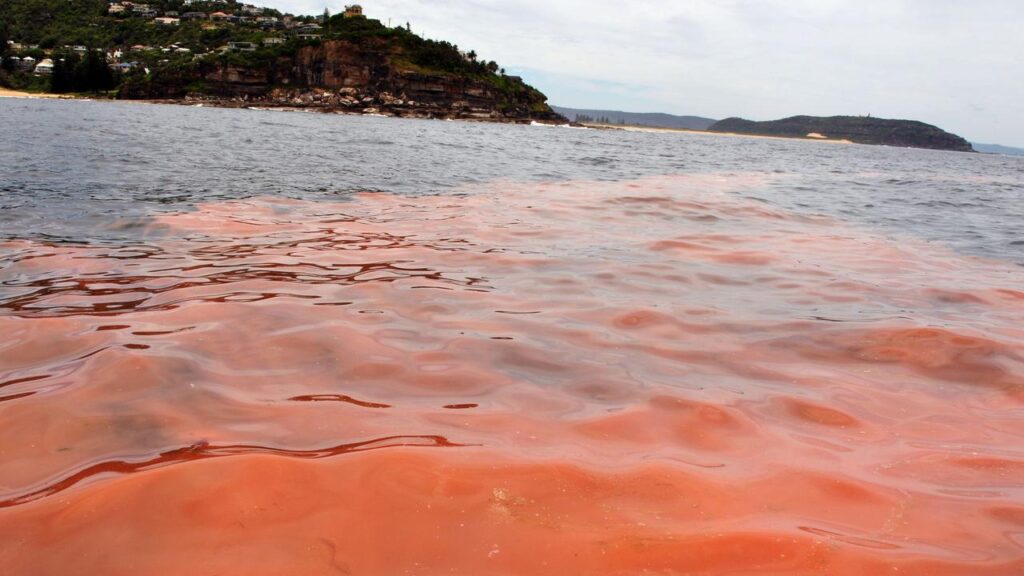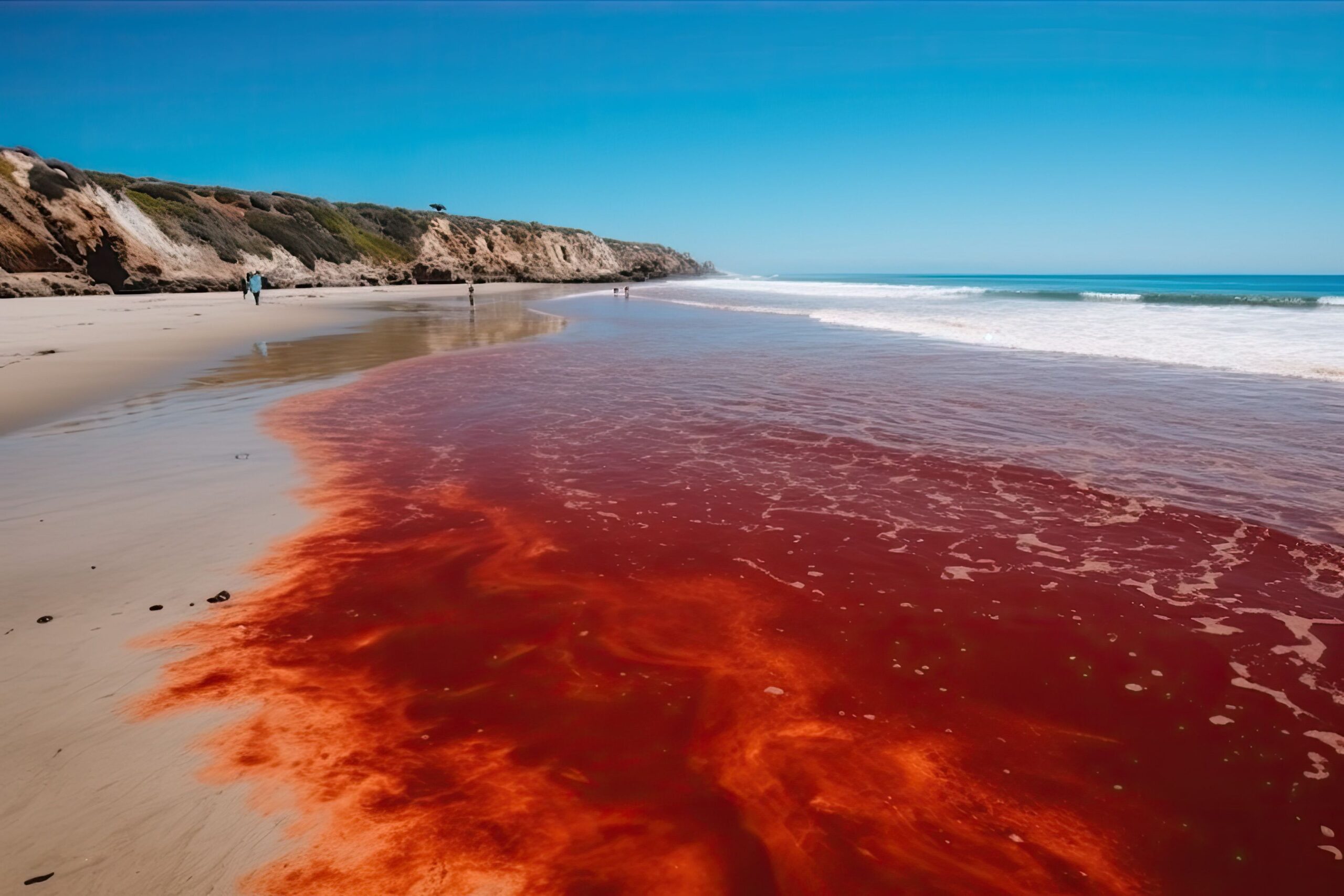As the sun beats down on the sandy shores of a major city, a hidden danger lurks beneath the surface. Beachgoers eager to dip into the refreshing waves are being cautioned against entering the water due to the sudden emergence of an algal bloom along the coastline. The tranquil scene is disrupted by the appearance of Trichodesmium cf erythraeum, commonly known as red tide or sawdust algae, posing risks not only to swimmers but also to the marine ecosystem.
The picturesque beaches of Perth, Australia, have fallen under the shadow of this natural phenomenon. The once inviting waters now exhibit sporadic patches of brown-red-orange-yellow surface scum resembling an oil slick. What may appear as a harmless discoloration holds the potential for significant harm. Trichodesmium cf erythraeum, when decomposed in water, takes on hues ranging from pinkish to pale green, signifying its presence and potency.
Authorities have sounded the alarm, advising against any recreational activities that involve direct contact with the affected waters. Swimming, diving, kayaking, jet skiing, and fishing in areas where water discoloration or algal scum is visible are strongly discouraged. The consequences of ignoring these warnings can be severe, with skin irritations such as stinging, tingling, or rashes being common among those who come into contact with the algae. Even individuals with sensitive skin are at risk, and symptoms may escalate to include sore throat, nausea, and general weakness.
Jared Koutsoukos, a senior scientific officer with WA Health, emphasizes the importance of heeding these precautions. The algae, transported by wind and tide, can spread rapidly and unpredictably along the coastline, necessitating vigilance from beachgoers and authorities alike. Furthermore, the blooms pose a threat to marine life, disrupting ecosystems and potentially causing long-term damage.
Efforts to monitor and assess affected areas are underway, with collaboration between WA Health, the Department of Water and Environmental Regulation, and local government authorities. Health warning signs are being erected where practical to alert the public to the dangers lurking beneath the surface. Additionally, community members are encouraged to report sightings of algal blooms or water discoloration, enabling swift response and mitigation measures.
In the event of contact with discolored water or algal scum, immediate action is advised. Rinsing off with clean water and seeking medical attention if symptoms develop can mitigate the risk of adverse health effects. Pets are also at risk and should be kept away from affected areas to prevent exposure.
As the tides ebb and flow, so too does the threat of algal blooms. While these phenomena may dissipate as quickly as they arise, their impact can reverberate long after they disappear. By remaining vigilant and informed, beachgoers can enjoy the beauty of the coastline while respecting the delicate balance of nature.
In the battle against unseen dangers, knowledge and precaution are our strongest allies. Together, we can safeguard our shores and ensure the safety of both humans and marine life alike.



